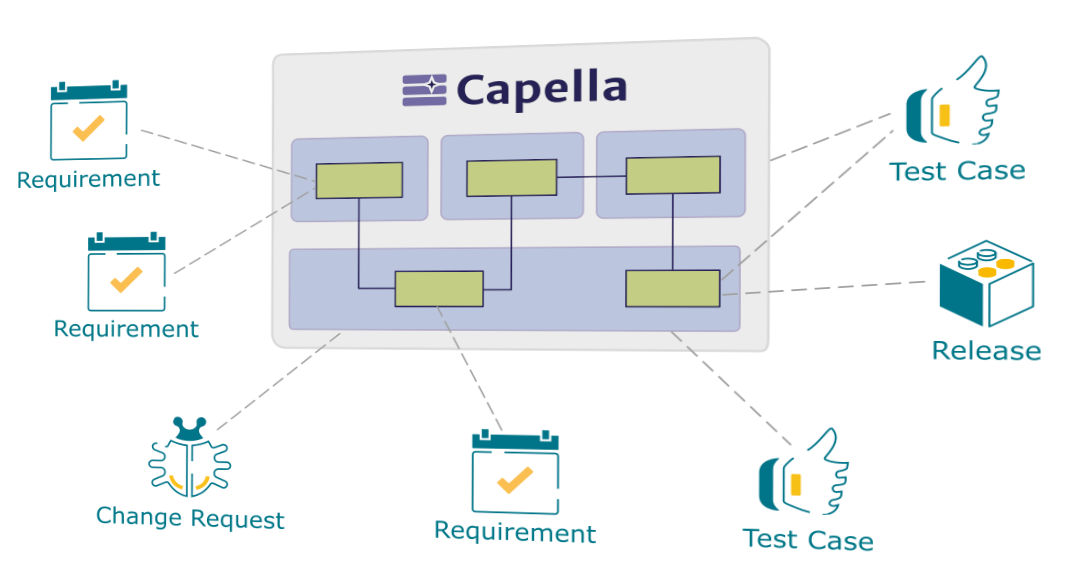
Publication for Capella provides a seamlessly integrated view between your system architecture and related engineering activities (IVVQ, Requirements, etc...).
Publish Capella models on a web server, connect them with requirements, change requests, test cases, releases, etc... defined in third-party repositories, and expose them to authorized stakeholders.
The supported repositories include Siemens Polarion® and IBM Jazz.
Efficiently maintain CONSISTENCY and ALIGNMENT between Capella models and third-party repositories (like ALM or RMS).
Author system design and work items with dedicated, but connected, tools
and make this data available across different engineering disciplines.
Systems engineers can expose their Capella models by regularly publishing them on a server.
The model elements, with all the related diagrams and the linked artifacts, become easily navigable from a web browser to any authorized user.
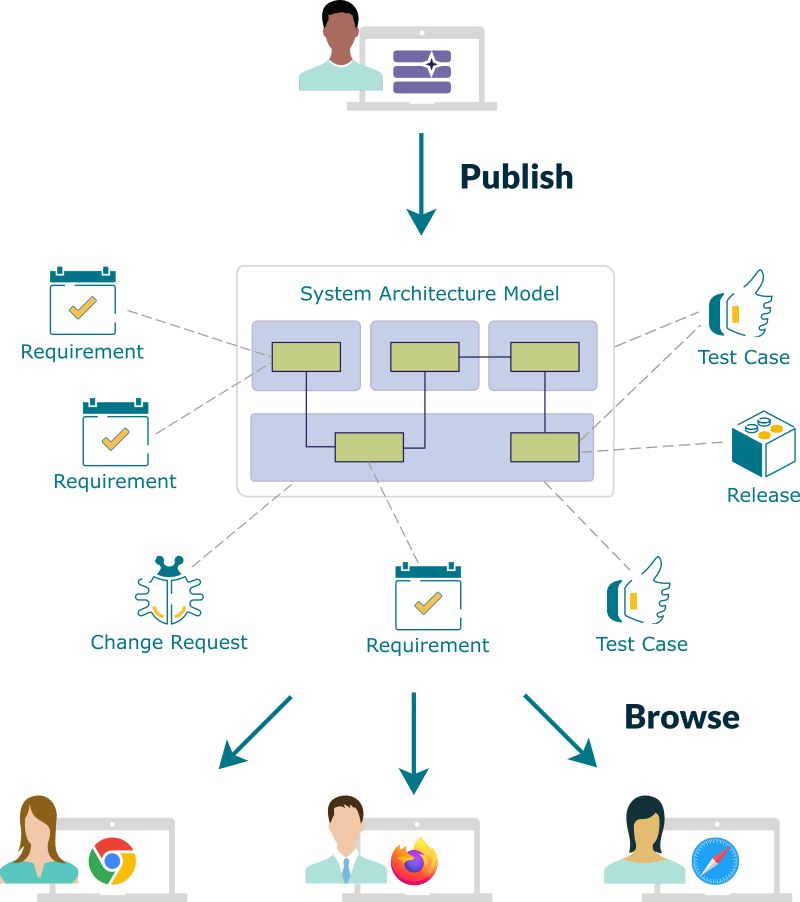
Systems engineers, working with Capella, can collaborate with other engineers working with connected ALM or RMS tools.
Both, they can create and manage synchronized traceability links between architecture elements and artifacts such as requirements, change requests, test cases, releases, etc...
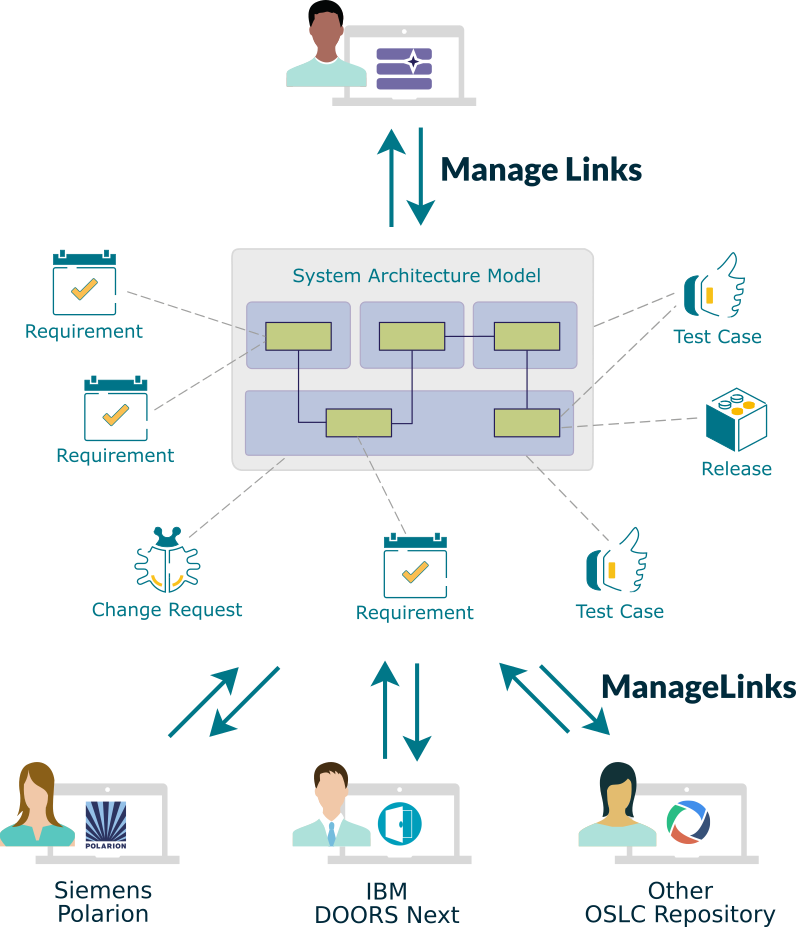
In contrast to the static documentation generated from a Capella model,
Publication for Capella provides dynamic access to a live model deployed on a server.
Manage authorizations to published projects based on users' role.
Users can locate model elements by using multi-criteria queries.
Elements published on the server can be linked to external artifacts.
A professional product developed and maintained by Obeo.
Break silos between teams by providing online access to an integrated view of your system architecture.
It facilitates your engineering teams to reuse work items and system elements.
Define an integrated system architecture federated with third-party repositories, and decide when to expose this consistent content to other stakeholders.
From the Capella Workbench
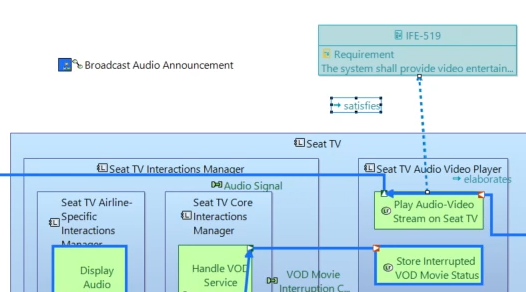
Create requirements, issues, test cases, etc, in third-party repositories, and collaborate with systems engineers to align these artifacts with the system architecture.
From a Third-Party Repository connected to the Publication server (ex: Polarion or DOORS Next)
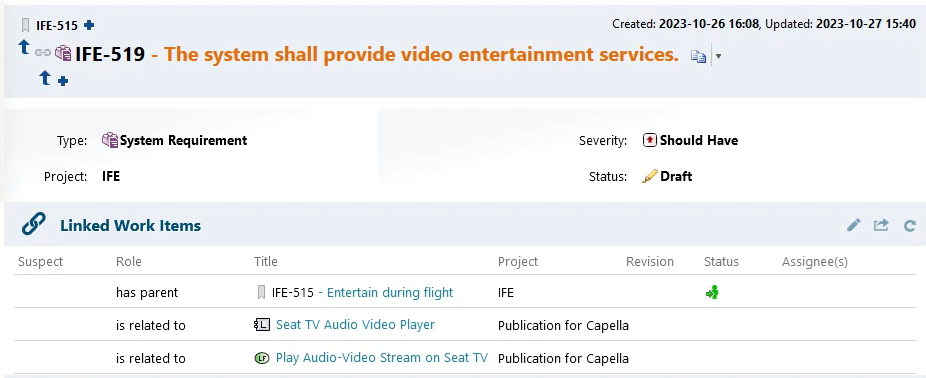
Benefit from an integrated and consistent view of the system architecture: a detailed model with verified traceability relationships to related engineering artifacts.
From a Web Browser
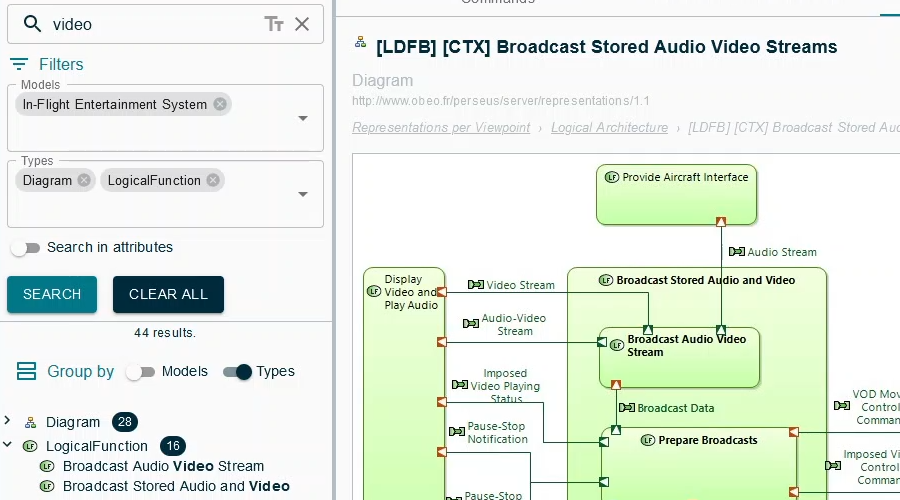
Control how the Capella models are exposed to stakeholders, and how they can be integrated with various third-party repositories containing engineering artifacts.
From the Publication Server
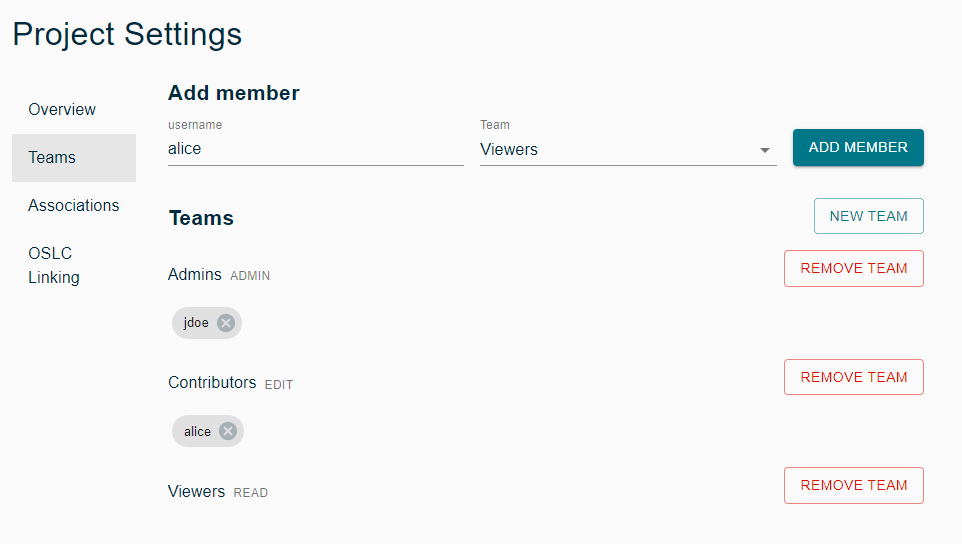
| Siemens Polarion® (versions 19 to 23) |
Yes |
| IBM® Jazz (versions 7.0.2 to 7.0.3) |
Yes (but some limitations exist if Global Configuration is activated)
|
| Other tools |
Evaluation required: the other tool needs to support OSLC-AM providers |
Third-party repositories such as Application Lifecycle Management Systems (ALM) and Requirements Management Systems (RMS) allow you to efficiently capture, organize, and link artifacts: requirements, tasks, issues, change requests, test cases, releases, etc. Rather than spreadsheets, using such tools is the best solution to efficiently manage your projects.
To enable traceability with objects managed in other repositories, some ALM and RMS tools support OSLC (Open Services for Lifecycle Collaboration), a set of specifications for APIs to interact with data on the web: searching, visualizing, and analyzing.
OSLC (Architecture Management) is an OSLC specification for exposing fine-grained architectural data to external systems via a modern Linked Data approach: no import/export between tools, resources are connected together to create a virtual continuity between repositories and to make it easier for tools to work together in different areas.
By supporting this specification, Publication for Capella enables the traceability between any system element in Capella and any artifact in OSLC-compliant tools.
